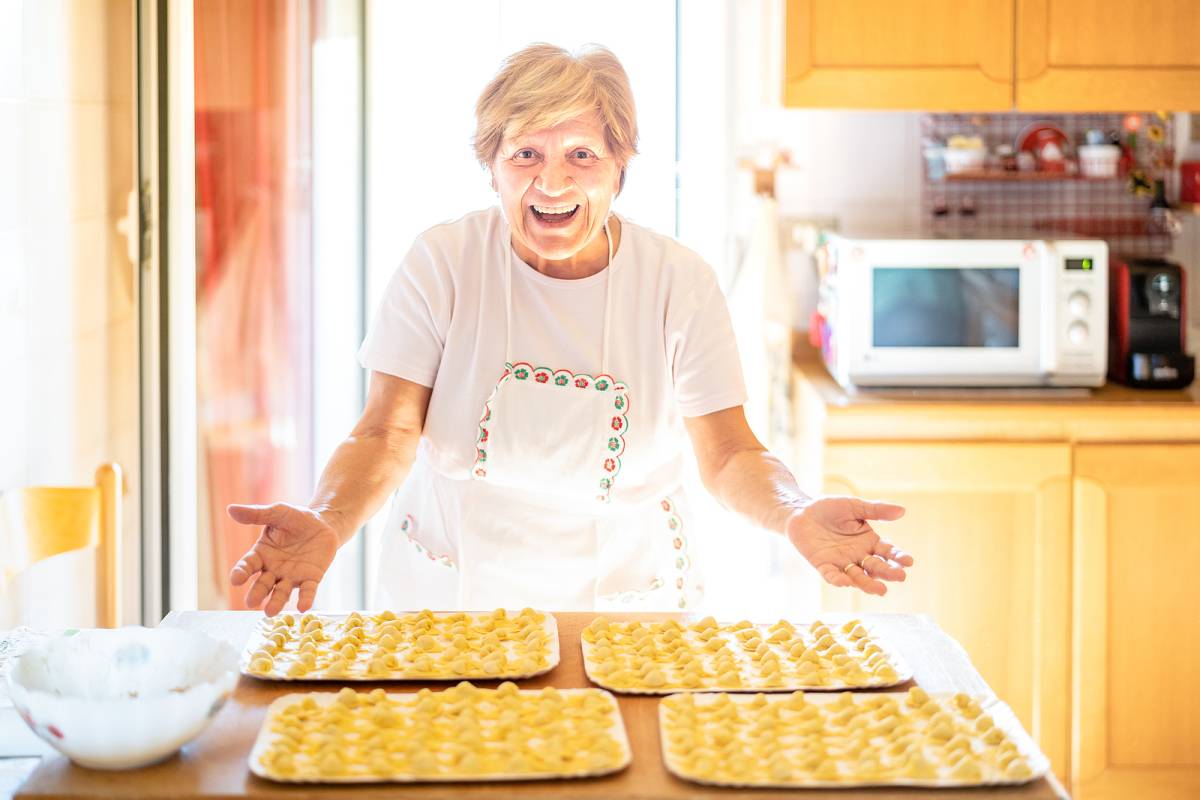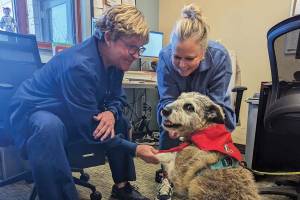by GAIL JOKERST
The following essay appeared in the pages of MSN/ISI some ten years ago after the Roberts Fire burned too close for comfort by the author’s West Glacier home. Considering how many wildland fires have ignited over the West this past summer, it seemed timely to revisit the memoir.
When forest fires ignited near my home two years ago, I began compiling a list of items to pack once word came to evacuate. My laptop and family photos made the roster. So did a cracked, nine-inch-long box that’s priceless to me and of questionable value to anybody else.
Four pounds of recipes lay cradled inside the oak, finger-jointed box. Although the collection includes magazine clippings and hand-penned index cards with procedures that have always proved reliable, those aren’t the recipes I’d mourn losing. My heart belongs to the dog-eared scraps of paper where specific baking times and ingredient amounts seem scarcer than moussaka in Montana.
Occasionally sporting unapologetic smudges of chocolate or olive oil, these recipes could, at best, be described as sketchy. With their vague guidance to brown a handful of orzo in butter or sprinkle with lots of finely minced garlic, they would qualify as downright useless to many people.
Scrawled while I observed old-world cooks share techniques they knew by heart, these recipes represent the most important cooking lessons of my life. I gleaned them from neighborhood women who had acquired their skills by the timeless method of watching an older relative prepare the family meals. As their unofficial apprentice, I was expected to carry on the tradition. No one weighed and measured ingredients for my mentors, who never weighed and measured for me.
My watch-and-learn recipes range from Greek, Middle Eastern, and Chinese cuisines to Jewish and Japanese. Though the ones I rely on most for a nostalgic taste from my New England past are the home-style Italian specialties I began collecting in fourth grade. To me, they’re like trustworthy old friends.
My love for all foods Italian began with my first forkful of spaghetti when I was seven. It escalated two years later when I made friends with Margaret Campoli, a neighbor from Rome, who happened to be closer in age to my grandmother than to me. I’d dash to Mrs. Campoli’s house after school to taste whatever simmered in a pot on the stove for that night’s dinner or sample the latest treat residing in her porcelain cookie jar. No doubt, the promise of biting into one of her crisp lemon-butter cookies helped nourish my budding culinary instincts.
Whenever I joined Mrs. Campoli as she held court in her sunny kitchen, I saw that exact amounts never mattered. Mrs. Campoli didn’t measure the hint of cinnamon she wafted over her tomato sauce. Without being told, I understood she didn’t expect me to measure it either.
During graduate school, I lived near another talented Italian cook, Rosa Giorgio, who fixed earthy Neapolitan fare. I often stood by Rosa’s side while she butterflied flank steak for bracciola or stuffed zucchini blossoms she’d picked from her garden that morning. As quickly and accurately as possible, I’d guesstimate amounts and jot down techniques. To interrupt this busy lady in the midst of mealtime preparation, so I could weigh a mound of Parmesan cheese, was unthinkable. I’d already learned that lesson at a tender age.
Because Rosa’s limited English matched my fluency in Italian, we relied mainly on visual communication. Though once, while waiting for her Macaroni al Forno to emerge from the oven, I did ask in halting Italian, “Quando e finito?” (When will it be done?) Her answer forever squelched my thinking in those terms again. In heavily accented English, punctuated by emphatic hand gestures, Rosa replied, “You look. You smell. You taste. You know.”
Afternoons spent with generous-hearted cooks such as Rosa and Margaret taught me that recipes may guide, but they’ll never substitute for experience. Novices will always have to practice skills, not follow formulas, to learn how smooth and pliant the challah or pita dough should feel when properly kneaded.
If my battered old box had disappeared in flame and smoke, I would have missed it dearly. But I’m happy to report the over-stuffed repository still sits in my Montana kitchen. From the shelf where it keeps me company, it continues to dispense ageless advice whenever I raise the lid.
Here is a favorite muffin recipe with specific ingredient amounts. No guesswork required. It comes from Gail’s cookbook, The Hungry Bear Kitchen: Recipes and Writings.
OATMEAL MUFFINS (makes 12)
- 1 teaspoon vinegar
- 1 cup milk
- 1 cup rolled oats
- ½ cup brown sugar, packed
- 1 large egg, beaten
- ½ cup vegetable oil
- 1 cup flour
- ½ teaspoon salt
- 1 teaspoon baking powder
- 1 teaspoon baking soda
Stir vinegar into milk. Pour milk into a mixing bowl; stir in oats. Let soak one hour. Add brown sugar, egg, and oil and blend well. Sift together dry ingredients then combine with wet batter. Bake in greased muffin tins 15 – 20 minutes at 400 degrees till golden brown. MSN
Gail Jokerst makes her home by Glacier National Park. Her stories have appeared in MSN for the past 17 years. (Or, in ISI for the past 12 years.) For more information about her writings, visit her website at www.gailjokerst.com










